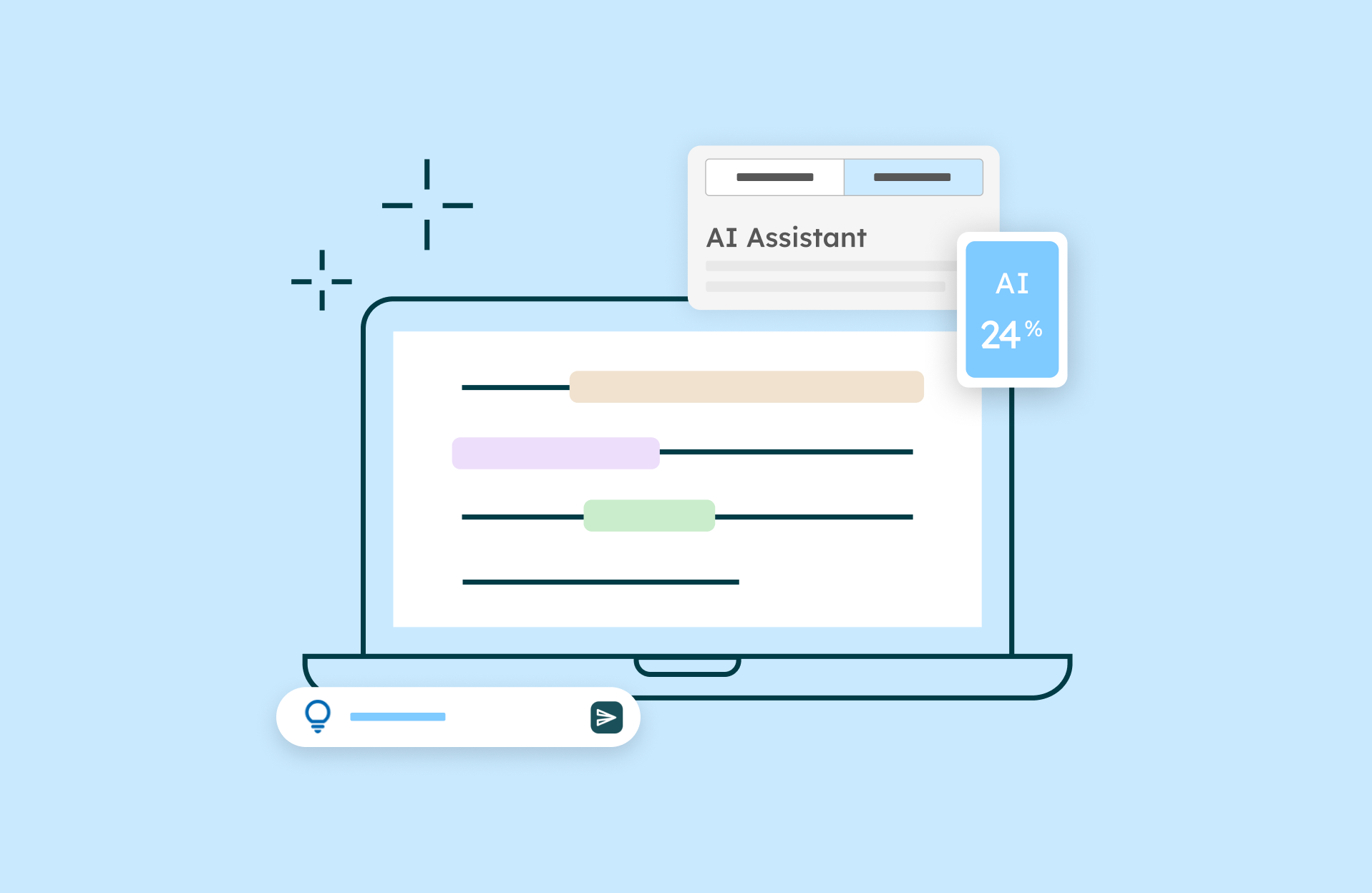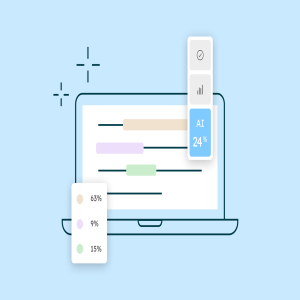AI writing tools are becoming more common in education. How can students use them responsibly?
We are familiar with the image of a stressed-out student procrastinating her assignment. The essay is due in the morning, and it’s past midnight. Rather than doing the reading, writing, thinking and learning, the student turns to ChatGPT to crank out a banal essay.
It’s no secret that AI tools can be misused to hinder the learning process, and students know it. Global research conducted by Turnitin and Vanson Bourne found that 64% of students are worried about the use of AI within education and that it may be shortcutting their learning. *
But educators and students also understand that, when used correctly, these tools have enormous potential to enhance learning. With 67% of students agreeing that AI is essential in helping them prepare for their next steps, the goal is not to completely shelter students from AI, but have them use it in ways that support critical thinking and improve their literacy in how AI can help.
What does responsible student use of AI look like?
AI should not make writing a frictionless process - researching subject matter, developing a point of view, articulating ideas with evidence, and editing can be a struggle, but it is in that work where the learning happens. This principle is well-understood in learning science as ' desirable difficulty .' True cognitive growth and long-term retention don't come from effortless tasks, but from engaging in a productive struggle.
We hear the phrase “do the work” repeatedly in today’s self-help and relationship improvement culture; work is required for developing, improving, and becoming a better version of yourself.
I’m a tennis player and have to hit a frustrating number of bad shots with a new technique to build up to a higher skill level. But, that does not mean I am doing it without help. I have coaches, videos, a partner, and even a ball machine. Students also have resources, including AI, to help them improve skills and develop knowledge, but it is important that they go through the process of thinking, writing, editing, and re-writing.
Educators have a pivotal role to play in ensuring that students learn to use AI effectively and responsibly . Part of that role is being clear with their expectations about how and whether AI should be used on any given assignment. We developed the AI assistant within Turnitin Clarity to foster student use of AI that supports the learning process with transparency and accessibility in mind.
So what does responsible AI guidance look like in practice? Leading thinkers on AI in education, like Wharton professor, Ethan Mollick , advocate for using AI as a 'coach or a tutor' that prompts reflection rather than simply providing answers. We designed Turnitin Clarity’s AI Assistant around this very principle.
How does Turnitin Clarity’s AI assistant support learning?
Turnitin Clarity’s AI assistant offers students feedback at all stages of the writing process, from helping students understand their assignment requirements to providing feedback on citations and use of sources, grammar and language, organizational feedback, and offering critical reflection on their ideas. Students can request feedback via open prompts or use one of the suggested prompts developed in partnership with educators, like “Help me check my understanding by asking me a difficult question about this part of my paper.” Students can request feedback on selections of text or on the entire paper in progress.
Feedback is tied directly to the instructor’s own guidelines, assignment instructions, and rubric. The AI assistant never generates a full response. Instead, it prompts reflection. It’s like having a TA sitting with you, nudging students to revise or rethink, and supporting writing as a process, rather than an end product. And because student interactions are visible to the instructor, it builds trust and accountability.
When instructors provide an AI tool that has been customized for an assignment, not only do students receive feedback that is more relevant but also more consistent. And when all students in the class have access to Turnitin Clarity’s AI assistant, it creates a level of fairness and consistency they value and expect.
And, because we are an education technology company, we treat student data with care it deserves. Turnitin does not use customer or student data to train our AI assistant within Turnitin Clarity. When we do use data to evaluate, improve, and extend the quality of the features, we first look to remove personal identifying information and then use anonymized, aggregated, or de-identified student assignment data.
Why does Turnitin offer both AI writing detection and an AI assistant?
We’ve worked with hundreds of educators across the globe at both secondary and postsecondary levels. The trendline that runs through the conversations is that each instructor has their own approach for guiding and inspecting student use of AI. And, their approach can change at the assignment level.
Turnitin offers AI writing detection and an AI assistant to meet the varied educator needs across an institution for different assignment types: formative and summative. We believe that at the heart of all of these approaches is transparency - students must be open and honest about the tools they use, and instructors must make their guidelines and expectations clear.
Our mission has always been about integrity in learning and supporting pedagogy, not about banning technology. Turnitin Clarity introduces a new approach to AI learning support, with transparency at its core.
Overview: Rethinking writing support with Turnitin's AI assistant
By framing AI as a learning partner that encourages critical thinking, we can uphold academic integrity while preparing students for the future. It all starts with transparency and tools built for learning, not all-purpose tools that make it too easy (and tempting) for students to forgo productive struggle.
*Turnitin was a partner in providing compensation to conduct Vanson Bourne’s research.





